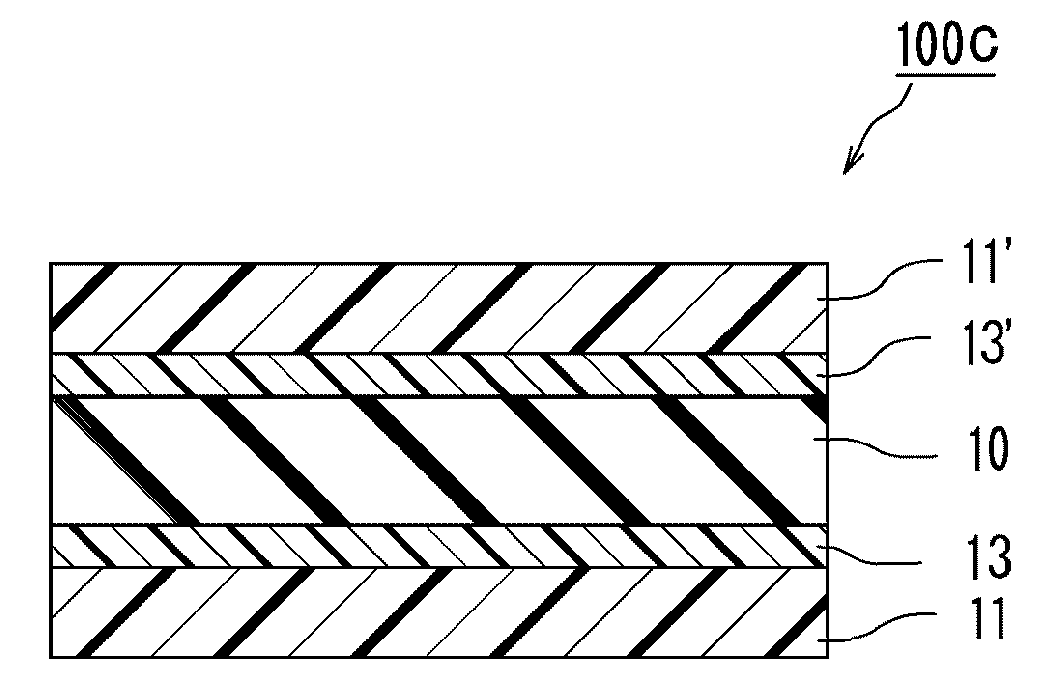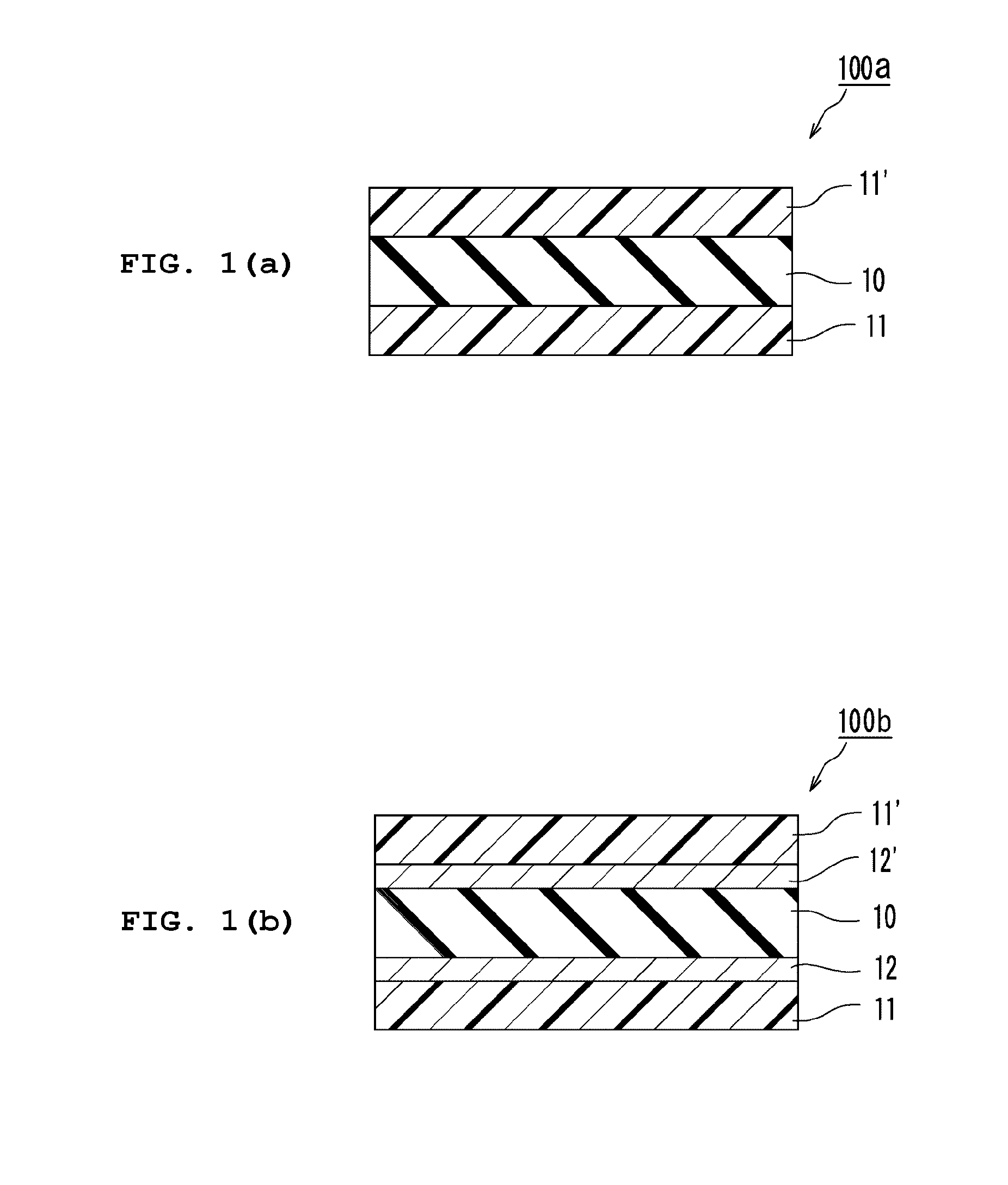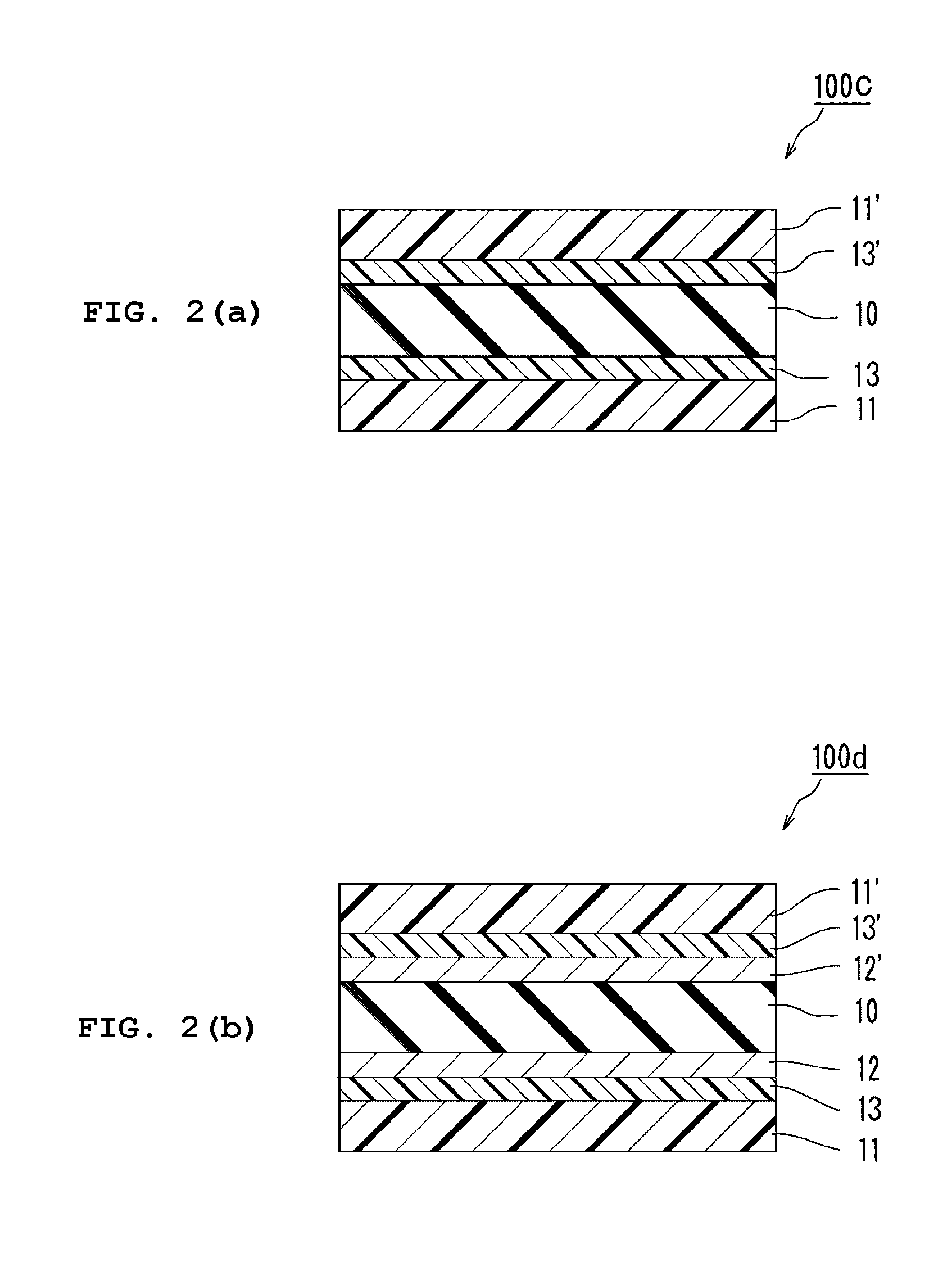Transparent substrate
a transparent substrate and substrate technology, applied in the field of transparent substrates, can solve the problems of increasing resistance value or disconnection, unable to obtain display devices with sufficient display performance, and unable to handle glass substrates, etc., to prevent the progress of cracks and excellent bending properties and flexibility.
- Summary
- Abstract
- Description
- Claims
- Application Information
AI Technical Summary
Benefits of technology
Problems solved by technology
Method used
Image
Examples
example 1
[0118]A polyether sulfone (Sumika Excel 5003P manufactured by Sumitomo Chemical Company, Limited), cyclopentanone, dimethyl sulfoxide, and a leveling agent (BYK-307 manufactured by BYK-Chemie) were mixing at a weight ratio (polyether sulfone:cyclopentanone:dimethyl sulfoxide:leveling agent) of 140:658:42:0.105. Thus, a casting solution (A) was obtained.
[0119]Separately, one surface of a thin-plate glass measuring 50 μm thick by 30 mm wide by 100 mm long was washed with methyl ethyl ketone, and was then subjected to a corona treatment. Subsequently, an epoxy group-terminated coupling agent (KBM-403 manufactured by Shin-Etsu Chemical Co., Ltd.) was applied to the surface, and was then subjected to a heat treatment at 110° C. for 5 minutes. The casting solution (A) was applied to the surface of the thin-plate glass subjected to the coupling treatment as described above, and was then dried at 70° C. for 4 minutes, at 150° C. for 4 minutes, and at 200° C. for 10 minutes. Thus, a resin la...
example 2
[0121]A polyarylate (U-100 manufactured by Unitika Limited), trichloroethane, and a leveling agent (BYK-302 manufactured by BYK-Chemie) were mixed at a weight ratio (polyarylate:trichloroethane:leveling agent) of 15:85:0.1. Thus, a casting solution (B) was obtained.
[0122]The casting solution (B) was applied to the surface of a polyethylene terephthalate film, and was then dried at 110° C. for 12 minutes. After that, the polyethylene terephthalate film was released. Thus, a resin film having a thickness of 35 μm was obtained.
[0123]A mixed solution obtained by mixing an epoxy-based resin (CELLOXIDE 2021P manufactured by Daicel Chemical Industries, Ltd.), an oxetane-based resin (OXT-221 manufactured by Toagosei Company, Limited), and a polymerization initiator (ADEKA OPTOMER SP-170 manufactured by ADEKA CORPORATION) at a weight ratio (epoxy-based resin:oxetane-based resin:polymerization initiator) of 90:10:3 was applied to the resin film. After that, the solution was dried at 40° C. fo...
example 3
[0126]A transparent substrate was obtained by placing a hard coat layer having a thickness of 3 μm on the side of the resin layer of the transparent substrate obtained in Example 1 opposite to the thin-plate glass. The hard coat layer was formed by: applying, to the surface of the resin layer, a mixed liquid of 75 parts of an epoxy-based resin (CELLOXIDE 2021P manufactured by Daicel Chemical Industries, Ltd.), 25 parts of an epoxy-based resin (EHPE 3150 manufactured by Daicel Chemical Industries, Ltd.), and 3 parts of a polymerization initiator (ADEKA OPTOMER SP-170 manufactured by ADEKA CORPORATION); and irradiating the applied liquid with UV light from a high-pressure mercury lamp (intensity: 400 mJ / cm2 or more) to cure the applied liquid.
PUM
| Property | Measurement | Unit |
|---|---|---|
| thickness | aaaaa | aaaaa |
| shrinkage stress | aaaaa | aaaaa |
| glass transition temperature | aaaaa | aaaaa |
Abstract
Description
Claims
Application Information
 Login to View More
Login to View More - R&D
- Intellectual Property
- Life Sciences
- Materials
- Tech Scout
- Unparalleled Data Quality
- Higher Quality Content
- 60% Fewer Hallucinations
Browse by: Latest US Patents, China's latest patents, Technical Efficacy Thesaurus, Application Domain, Technology Topic, Popular Technical Reports.
© 2025 PatSnap. All rights reserved.Legal|Privacy policy|Modern Slavery Act Transparency Statement|Sitemap|About US| Contact US: help@patsnap.com



